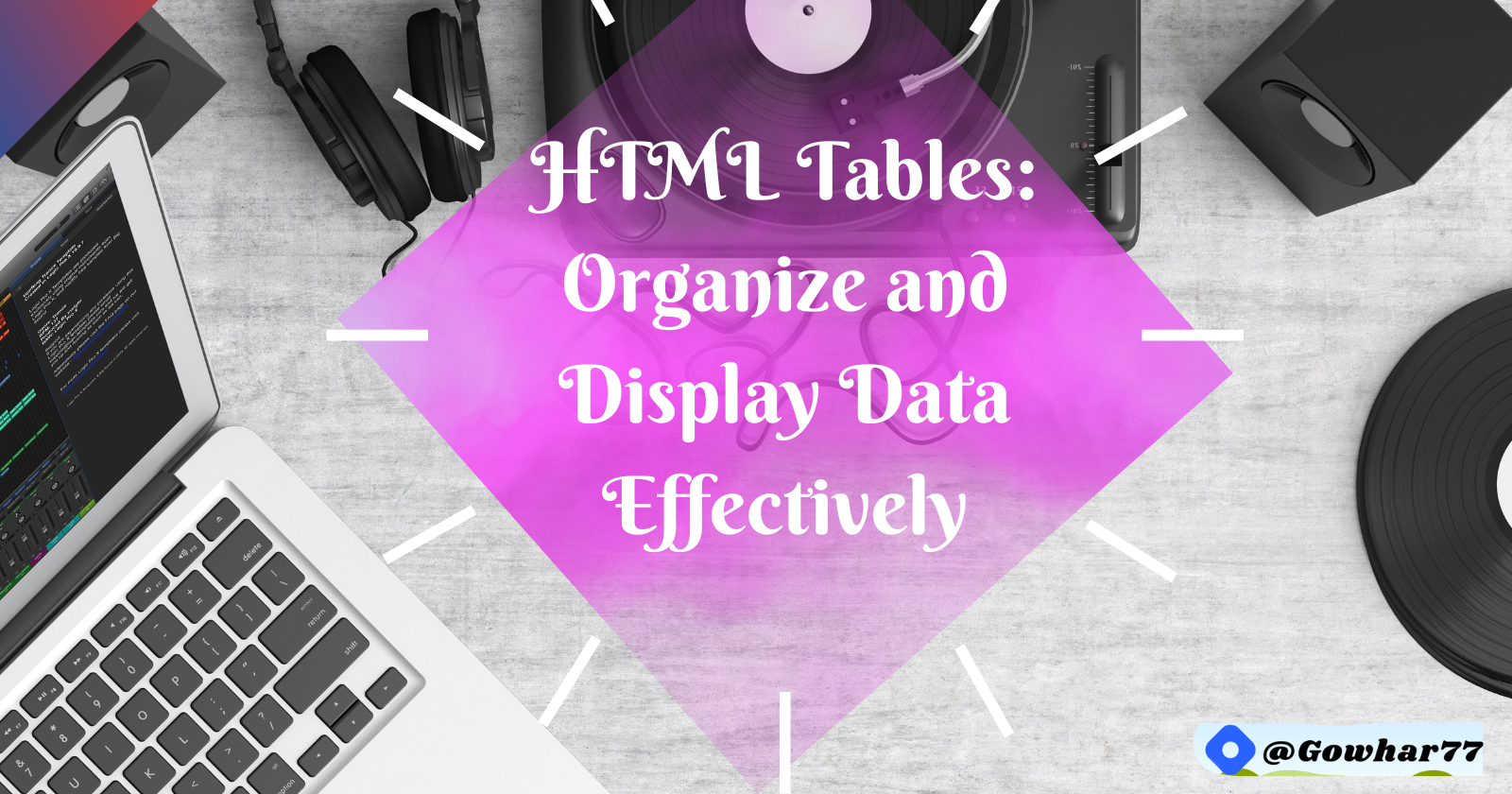HTML Tables: Organize and Display Data Effectively
 GOWHAR HUSSAIN SHEIKH
GOWHAR HUSSAIN SHEIKH
In HTML, tables are used to display data in rows and columns. They provide a way to organize and present information in a structured format. Here's an example of how to define tables in HTML:
<table>
<tr>
<th>Header 1</th>
<th>Header 2</th>
<th>Header 3</th>
</tr>
<tr>
<td>Data 1</td>
<td>Data 2</td>
<td>Data 3</td>
</tr>
<tr>
<td>Data 4</td>
<td>Data 5</td>
<td>Data 6</td>
</tr>
</table>
Let's break down the structure:
The
<table>element is used to define the table.Each row is defined with the
<tr>element.The table headers are defined using the
<th>element and the table data cells are defined using the<td>element.
In the example above, the table has three columns and three rows. The first row contains the table headers, and the subsequent rows contain the data cells. You can add more rows by adding additional <tr> elements, and you can add more columns by adding additional <th> or <td> elements within the appropriate row.
It's common to use CSS styles to further customize the appearance of tables, such as adding borders, changing colors, or adjusting spacing.
rowspan and colspan attributes in HTML tables:
The rowspan and colspan attributes in HTML tables allow you to span a cell across multiple rows or columns, respectively. These attributes provide flexibility in merging or splitting cells to accommodate specific layout requirements. Here's an example that demonstrates the usage of rowspan and colspan:
<table>
<tr>
<th>Header 1</th>
<th>Header 2</th>
<th>Header 3</th>
</tr>
<tr>
<td>Data 1</td>
<td rowspan="2">Data 2</td>
<td>Data 3</td>
</tr>
<tr>
<td>Data 4</td>
<td>Data 5</td>
</tr>
<tr>
<td colspan="3">Data 6</td>
</tr>
</table>
Let's break down the modifications in this example:
In the second row, the second
<td>element has arowspanattribute set to "2". This means that the cell will span across two rows.In the third row, the first
<td>element has acolspanattribute set to "3". This causes the cell to span across all three columns.
As a result, the table will have the following structure:
--------------------------------
| Header 1 | Header 2 | Header 3 |
--------------------------------
| Data 1 | Data 2 |
| Data 4 | Data 3 | Data 5 |
---------------------|-----------
| Data 6 |
--------------------------------
Note that the merged cells visually occupy the space of the merged rows or columns. The rowspan and colspan attributes allow you to create more complex table layouts by combining or extending cells as needed.
Subscribe to my newsletter
Read articles from GOWHAR HUSSAIN SHEIKH directly inside your inbox. Subscribe to the newsletter, and don't miss out.
Written by

GOWHAR HUSSAIN SHEIKH
GOWHAR HUSSAIN SHEIKH
Hey, I am Gowhar Hussain, an undergrad student learning Web Development. I will be focusing on Web development in my blogs.